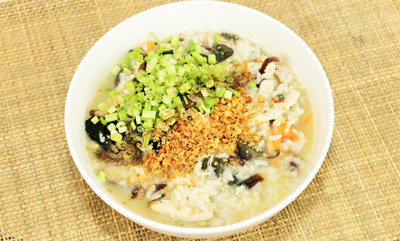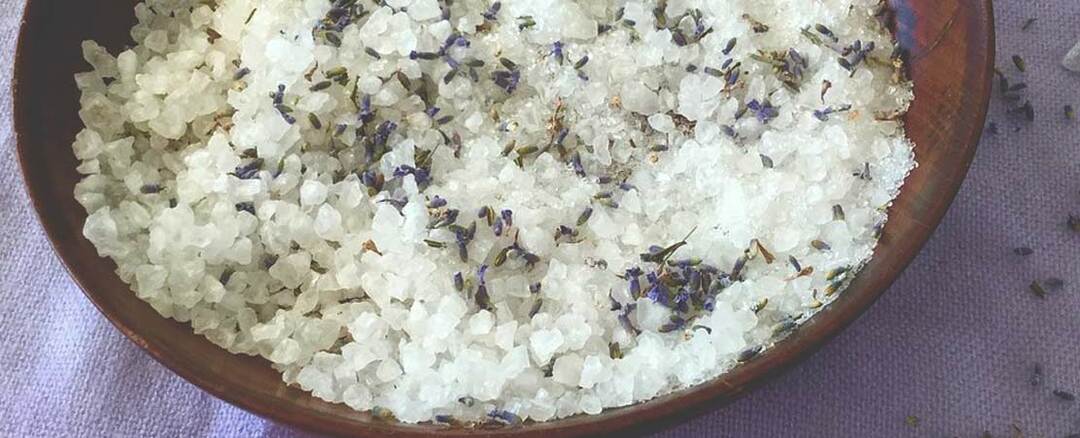
Contents of the page
- 1 Gluten: enemy number 1?
- 2 Where is it used?
- 3 The Danger of
- 4 Why is Gluten Harmful?
- 5 Efficiency of the
diet What is gluten and what are its useful properties? Can it hurt your health? Why are fashion magazines and television advertising actively promoting gluten-free diets? To answer these questions, you need to understand what gluten is, how it affects the body, and why supporters of a healthy lifestyle have declared it to be an enemy of humanity?
Gluten: enemy number 1?

What is so terrible behind the concept of "gluten"?After all, in fact - it's just a complex protein, which is part of the grains of cereals, wheat, barley and rye and contains important amino acids. The solution lies in its ability to glue together other proteins that enter the human digestive tract with food.
Until recently, this protein was considered a common gluten, which has the ability to combine water with flour, giving the dough a plastic shape. Natural gluten, contained in cereals, is not harmful to health. However, in the course of many years of research, gluten was isolated into an independent substance, gluten-free protein was produced under industrial conditions, and the resulting dry powder was widely used in the food industry. The demand for a specific protein and scientific research led to a change in the methods of processing wheat and the emergence of new types of chemical fertilizers working to increase the share of gluten in grain cereals, which led to a change in the useful properties of conventional gluten.
Pure gluten, produced in industrial conditions, is a sticky mass of gray color, completely devoid of odor and taste. That is why it acts as an ideal filler, provides the desired consistency to the product and extends the shelf life of the product. Now the reason for dislike of nutritionists for this substance becomes understandable, because it is gluten that is hidden under the name "vegetable protein" or "modified food starch", which is full of packages of ketchups, sauces and other food products( sausage and dairy products, baked goods).
Today, modified gluten is present almost everywhere and its excessive consumption adversely affects the digestive system of a person who can not cope with the load. When an overabundance of this harmful substance develops an allergy to gluten.
Where to apply?

Gluten is used in the food industry everywhere. Modified gluten is added in the manufacture of dairy semi-finished products as thickener. Mayonnaise, ketchup and sauces acquire their consistency and stand on the shelves for a long time thanks to gluten. Food of wide demand, such as sausages, sausages, dumplings, ready-made cutlets and even crab sticks, contain gluten, which partially replaces meat. Such products are quickly saturated and stored for a long time.
Even in the production of mixed fodders, corn gluten is used. More precisely, pure protein obtained in the process of processing corn grain and possessing valuable nutritional properties. The extracted protein has a cream-yellow color and a pleasant smell, and the energy value of one kilogram of gluten is equal to seven kilograms of corn. According to the protein content, a kilogram of gluten is equal to one kilogram of fishmeal. Such mixed fodders are fed by hens at poultry farms.
Danger

When buying the usual products in the store, we rarely pay attention to the composition, let alone find information about the content of gluten. But if this substance is contained in virtually every package, then during the day a person can get a monthly rate of this protein. And this is a direct threat to health. Therefore, it is worth considering how dangerous gluten is, and how to protect the body from its overabundance.
A serious danger consists in the fact that the modified gluten entering the body in large quantities glues the villi on the surface of the small intestine, as a result of which its walls become inflamed and the absorption of carbohydrates, fats, microelements and vitamins is impaired.
In addition to the food tract, gluten attacks the brain, heart and joints. Moreover, the symptoms of the lesion can be poorly expressed, and the diagnosis can be made only after a special test. Gluten does not dissolve either in water or in salts, and, accumulating in the body, clogs the intestine, causing dystrophy of the small intestine.
In addition, gluten causes a certain psychological dependence. When it disintegrates, glutenic exorphins are formed, similar to opium and morphine, by their action. They activate the specific receptors in the brain, creating dependence on flour and sweet products.
The gluten formula consists of two proteins: glutenin and gliadin.
From the immune system gliadin causes a kind of attack, because it is perceived by the body as a foreign element, from which it is necessary to get rid of. It is the gliadin that brings health problems and provokes allergic reactions. Thus, industrialists turned gluten into a dangerous substance, oversaturated with this protein all products, after which the useful gluten turned into a destructive weapon.
Why is gluten harmful?

There are several opinions on this score. First, it increases the risk of allergies. Secondly, it can not be ruled out that a high content of this protein in foods can cause gluten intolerance to the body and lead to a disease called celiac disease.
Allergy to gluten is a reaction of the body and manifests itself in different ways. For example, an allergy in a child often occurs when adding to the menu of cereals containing gluten. These include semolina porridge, wheat, oatmeal or cooked from rye cereals. Symptoms of allergies directly depend on the person's age and are manifested by the following disorders in the body:
- diarrhea or constipation;
- flatulence;
- presence of fat in the stool;
- unreasonable weight loss;
- joint pain;
- frequent ARI;
- bleeding gums;
- dry skin.
The most effective treatment in case of allergies is a gluten-free diet with the recommended intake of multivitamins and correction of the content in the diet of iron and calcium.
Celiac disease is a chronic disease caused by gluten intolerance. It is believed that this pathology is inherited, but until the end of the mechanism of origin of the disease has not been studied. In the process of development of this disease, the villous lesions of the small intestine, which causes gluten, occur.
In addition to the gluten-free diet, there are no other ways to treat this disease. Drugs that correct the content of gluten in the blood have not yet been created, therefore, the responsibility for the treatment lies entirely with the patient. And if the disease is associated with the effect on the body of a modified protein, you must completely abandon its use and strictly follow all the recommendations of the doctor.
Treatment with the

Therapy Celiac therapy is rather a non-therapeutic activity, but a way of life in which it is required to closely monitor the composition of the diet based on the characteristics of the organism. To simplify the life of a person who has gluten intolerance, you need to know clearly which foods contain gluten and completely eliminate them from the diet.
The development of celiac disease in children and adults can be manifested in different ways. In children, the symptoms of gluten intolerance usually arise with the beginning of complementary feeding. There is an end to weight gain, bloating, a "frothy" loose stool, and vomiting often occurs. These symptoms are accompanied by a general deterioration in the child's condition, tearfulness, irritability and rapid fatigue. The earlier the gluten is introduced into the baby's food, the harder it will be to celiac disease in the future.
In adults, gluten intolerance symptoms are usually masked for chronic bowel and stomach diseases, dermatological pathologies or hypovitaminosis. Celiac disease is often manifested by dyspepsia and flatulence. These disorders can be treated unsuccessfully for years, until the main cause, gluten intolerance, is established. Most often, celiac disease occurs in women and is not only manifested by migraine and depression, but it can also disrupt the sexual and reproductive system and lead to infertility.
Currently, the most common causes of gluten intolerance doctors believe that the body lacks an important enzyme that breaks down gluten and helps to remove it from the body and the presence of antibodies to it in the human blood, which provokes allergic manifestations.
In the presence of one or more symptoms, doctors are in no hurry to diagnose, prescribe a gluten test and long-term examinations, including a gut biopsy, which is performed under anesthesia. The gluten intolerance test is carried out by detecting antibodies to gliadin, venous blood is taken as a material. The study period varies from three to five days.
Elimination of gluten from the diet

Completely eliminate gluten from the diet is not easy, because it occurs even in toothpaste. We need careful control over everything that a person consumes and uses. That is why the only possible way to treat celiac disease is a life-long consumption of gluten-free foods. Such products include gluten-free cereals and natural plant and animal products. For example, corn porridge has the ability to inhibit the processes of fermentation and putrefaction in the intestine, but contains few vitamins. Porridge of millet or millet porridge also does not contain gluten and is recommended for treatment with antibiotics at least once a day. Rice porridge without gluten is energy-rich, and buckwheat contains iron and magnesium salts.
To make a menu, it is very important to know what kind of flour is not gluten, to use only it for cooking. It is not contained in oatmeal, rice, corn, soybean, buckwheat flour. The minimum content of gluten in products that have not been treated with steam or water. For example, in rice, buckwheat or in foie. Gluten does not contain:
- legumes: peas, beans, lentils, soybeans;
- all vegetables and fruits;
- natural milk and fermented milk products;
- solid cheeses( except for those that are made in violation of GOSTA, when powdered gluten is added uncontrollably);
- natural oils, cream and vegetable;
- meat, fish and egg.
The effectiveness of the diet

To ensure that the gluten-free diet is effective, you should not only limit the intake of foods with its content, but completely eliminate the foods containing gluten from the diet, since even its minimal amount provokes inflammation of the intestine. It is difficult to achieve a complete elimination of gluten, but, perhaps, if you use natural products and do not buy semi-finished products.
At the beginning of the diet, it is necessary to exclude all dairy products to help the body metabolize milk sugar in the intestine and easier to transfer the diet. When treating any other disease, it is important to be careful, as many drugs contain gluten. Do not forget that gluten is found in some alcoholic beverages. Absolutely accurately there is gluten in beer and vodka, since beer is prepared on the basis of malt and barley, and vodka is made from wheat.
When switching to a gluten-free diet, it is necessary to reduce the amount of food consumed, since more nutrients pass through the intestinal mucosa than before the diet, which can lead to an increase in body weight. Do not experiment with food yourself. The lack of certain important elements of nutrition, vitamins and trace elements can lead to hypovitaminosis. There are a number of companies that produce only gluten-free products. Of course, the price of "clean" products is significantly higher than for ordinary goods. They have a special marking, on which they can be found on supermarket shelves.



